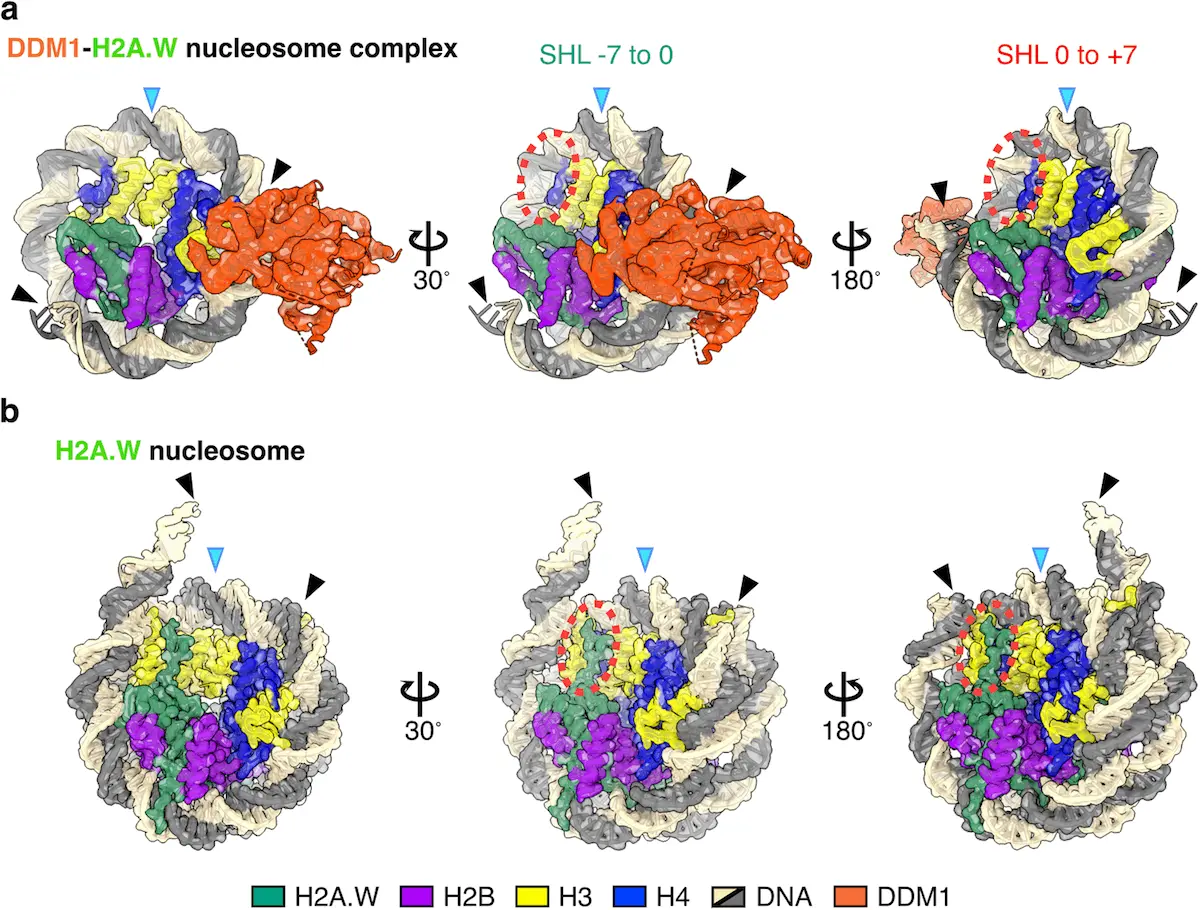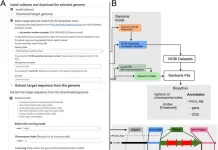A recent study by Akihisa Osakabe and his colleagues, researchers at the University of Tokyo, elucidated the intriguing dance between plants and their “jumping genes.” Their work, published in the Nature Communications journal, lays bare how plant protein DDM1 (Decreased in DNA Methylation 1) uses an intricate molecular mechanism to silence such disruptive elements.
Think of a naughty child rearranging furniture in a room – that is what “jumping genes” or transposons do in our DNA. These mobile genetic elements can copy and insert themselves into different locations, potentially disrupting important genes and causing chaos in the genome. This is why organisms have evolved mechanisms to keep these “jumping genes” under control. This blog post explores how DDM1, a protein found in plants, controls these dangerous “jumping genes,” thereby providing insights into human health and agriculture.
The Silent Guardians: DDM1 and Chemical Marks
DNA can be thought of as a spool of thread that is tightly wound. Cells are required to unwind this spool and stretch it to access certain genes. In the same manner, transposons located inside highly compacted DNA regions become hidden from cellular machinery that would silence them. DDM1 plays a role at this point.
DDM1 is a major player in the battle against “jumping genes.” It allows for chemical marks to be placed on these elements that act as small red flags for silencing enzymes (Roos & Krawetz, 2009). These chemical changes, referred to as DNA methylation, turn off the ability of a transposon to move about.
Unveiling the Mystery: A Look Inside the Nucleosome
But how does DDM1 find its way into densely packed transposons? That was what Osakabe and his group were trying to answer using this central question. To accomplish this, they employed an extremely powerful technique called cryo-electron microscopy (cryo-EM). Imagine an ultra-powerful microscope that can magnify atoms individually; that’s what cryo-EM essentially does.
The researchers came up with advanced technology that enabled them to see a 3D view of DDM1 together with DNA that is wrapped around histone proteins and referred to as nucleosomes. This, therefore, brought about an elaborate understanding between DDM1 and the nucleosome.
Opening the Door: A Fine Dance by DDM1
The high-resolution images provided a surprising detail. DDM1 doesn’t brute force its way into the nucleosome; instead, it attaches itself at certain points on the DNA, leading to a crucial change in its structure. It leads to the “opening up” of the tightly packaged DNA around the transposon in this limited region. This creates an opportunity window for enzymes that usually attach silencing marks to the gene, rendering it inactive.
Beyond Arabidopsis: Implications for Human Health and Agriculture
Researchers stress the importance of this finding when they say, “Understanding how proteins like DDM1 control these genes helps us understand some very basic steps in life and could have major implications.”
HELLS (Human HELicase, Lymphoid Specific), a human version of DDM1, does similar things. Consequently, once we are aware of what exactly happens because of DDM1’s activities, there is a good chance that we will understand HELLS much better. It will provide valuable information for developing cures against uncontrollable jumping genes causing genetic diseases in humans.
Moreover, the investigation helps explain how plant genomes are stable. This information can be used to develop better crops that can endure harsh weather or yield more. To assimilate our knowledge of what silences plant transposons may help scientists develop genetically modified organisms with easily controlled traits.
The Final Note
Osakabe’s work greatly advances the understanding of how plants silence their “jumping genes.” Cryo-EM reveals an intricate relationship between DDM1 and nucleosome structure, which sheds light on the basic mechanisms of gene regulation. In addition to growing knowledge about plants, this study holds the possibility of revolutionizing human health and farming systems. There is still a long way to go before fully understanding organismal control over their genomes, but the researcher’s work is a small yet valuable part of it. With every turn we take in exploring DNA and gene regulation, possibilities for innovation and discovery appear limitless.
Join the Discussion
The blog post discussed the intriguing world of plant genomics and their regulations for ‘jumping genes.’ As a result, Scientists’ research on DDM1 protein has revealed one of the key processes that silence these disruptive elements.
Share your thoughts and questions in the comments below!
Let’s keep the conversation going!
Article Source: Reference Paper | Reference Article
Follow Us!
Learn More:
Anchal is a consulting scientific writing intern at CBIRT with a passion for bioinformatics and its miracles. She is pursuing an MTech in Bioinformatics from Delhi Technological University, Delhi. Through engaging prose, she invites readers to explore the captivating world of bioinformatics, showcasing its groundbreaking contributions to understanding the mysteries of life. Besides science, she enjoys reading and painting.
















